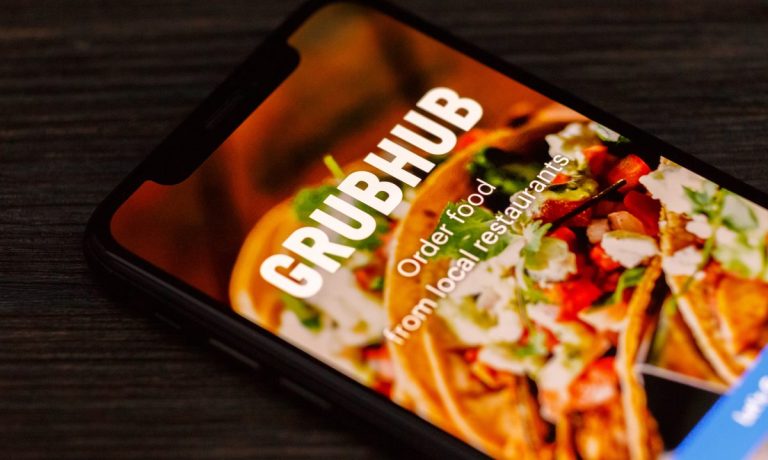At the height of the pandemic, many in the restaurant industry predicted that the rapid proliferation of ghost kitchens and virtual brands was premature, arguing that the model would not prove sustainable once consumers were able to return to restaurants. Now, however, even as dining rooms are full, consumers continue to order for delivery from digital marketplaces, and virtual restaurants are only becoming more common.
“Virtual restaurant concepts are more popular among restaurant operators than ever before,” Marnie Boyer, vice president of diner acquisition at Grubhub, told PYMNTS. “More restaurants have tapped into the concept because it gives operators the opportunity to test additional, delivery-only menu concepts with little financial risk. These concepts create new revenue streams, attract untapped customers and increase restaurant exposure, all with little overhead.”
Earlier this month, Grubhub announced the launch of its own virtual brand preparing food created from recipes by several winners of the popular Fox reality television show MasterChef.
For the aggregator, the virtual brand model allows the quick addition of new restaurant concepts without requiring the high time and financial investments associated with creating brick-and-mortar brands, offering buzz-generating options exclusive to the aggregator’s marketplace.
“We’re always looking for ways to deliver more for our diners and keep them coming back to Grubhub for their food needs,” said Boyer.
For the Consumer
Advertisement: Scroll to Continue
As consumers continue to seek out digital ordering channels, Boyer argued that the rise of virtual brands benefits restaurant customers by giving them more merchants from which to choose.
“Virtual restaurants provide our diners with more restaurant options and diversify the food choices available,” she said, “helping diners find everything they need on our platform.”
Certainly, a significant share of consumers places orders from restaurant marketplaces each month. In fact, the majority do so, according to data from the May edition of PYMNTS’ ConnectedEconomy™ Monthly Report, which drew from a survey of more than 2,600 U.S. consumers. The study found that the share of consumers using restaurant aggregators at least once a month rose 8% in May from 52% in April to 56% in May.
Read more: 19M More Consumers Went Online to Bank, Buy and Pay Bills in May 2022
Additionally, 41% of consumers who order from restaurant aggregators use Grubhub, reveal findings from the March/April edition of PYMNTS’ Digital Divide series, “The Digital Divide: Regional Variations in U.S. Food Ordering Trends and Digital Adoption, created in collaboration with Paytronix, which drew from a February survey of more than 2,500 U.S. adults who regularly purchase food from restaurants.
See also: New Research Shows That Regional Dining Quirks Matter in Tailoring Restaurant Offers
Granted, these behaviors are not fixed.
“Diners ordering habits are constantly changing,” said Boyer, “so we analyze them to help shape our restaurant selection, menu diversification and future offers.”
For the Brand
For those interested in launching new restaurant brands, meanwhile, the ghost kitchen and virtual brand models enable them to do so with a lower barrier of entry.
A word on language—while terms such as ghost kitchen, dark kitchen and virtual kitchen are often used somewhat interchangeably, with different schools of thought on the distinctions, Boyer clarified that, for Grubhub, ghost kitchens “do not have a customer-facing physical storefront and can be used as a coworking space for multiple restaurant operators.” In contrast, a virtual kitchen “operates from existing brick-and-mortar restaurants” rather than a dedicated coworking commercial kitchen.
Boyer argued that either such delivery-only model poses “an excellent way for chefs and entrepreneurs to launch their virtual brands with greater flexibility to adapt to shifting and emerging food trends and lower startup costs.”
This approach can be seen in the wide range of celebrity- and influencer-helmed virtual concepts that have launched in recent years, enabling such public figures to attract customers at the peak of their popularity rather than risk being too late and failing big by investing all the time and resources into opening a traditional restaurant.
For the Host Restaurant
Boyer argued that, as consumers benefit from increased food options and as the leaders of the virtual brand benefit from the quick-to-launch and -adapt accessibility of the model, restaurants that host virtual brands benefit from the additional revenue stream without too much overhead cost.
“Virtual restaurants provide restaurant operators with the necessary space to prepare additional meals at a much lower cost than opening a separate brick-and-mortar restaurant location,” she said.
She cited a Grubhub study conducted in partnership with Technomic finding that restaurateurs’ adoption of the model is on the rise, with 41% of independent operators now running virtual restaurants.
Her remarks echo those of Alex Canter, CEO of virtual restaurant company Nextbite and fourth-generation owner of Los Angeles’ iconic Canter’s Deli, who argued in a May interview with PYMNTS’ Karen Webster that 90% of restaurants could use the model to make more food and meet more demand. He cited the example of IHOP adding a grilled cheese and a quesadilla brand to boost late-night sales.
“We’ve really wanted to help these restaurants to maximize their underutilized kitchens, ’cause every restaurant has these opportunities to sell more food if they had that demand to do so,” he explained.
Related news: How a 91-Year-Old LA Deli Inspired the Launch of Next Gen Virtual Kitchen Concepts




